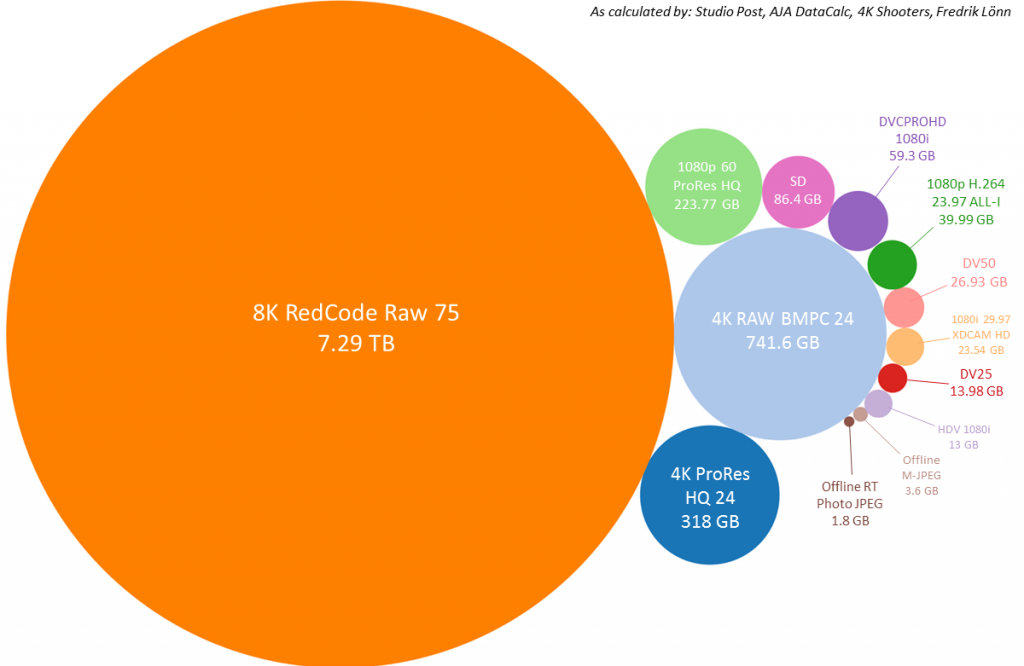Demand for High Res Content is Driving File Size Growth
The demand for high resolution content is growing rapidly. Not a statement most of us would be surprised by. What might be surprising, on the other hand, is the size and scale of the files these high res videos yield.
8K is emerging
Studio Daily recently wrote an article about Guardians of the Galaxy Volume 2 noting that in the first 34 days of shooting they accumulated 100TB of 8K footage. That’s an enormous amount of data to manage no matter how you look at it; and that wasn’t even the final product. When filming wrapped up earlier this month the final output was likely closer to 350TB of data.
We dug into this example a little deeper and put together the chart below to illustrate the file size for one hour of 8K footage (shot with the same specs as Guardians of the Galaxy V2) compared with other resolutions and formats. It’s a great visualization of the exponential jump in file size when capturing video in 8K compared to 4K, HD and even SD.
Today’s Reality – 4K is gaining momentum
You might say the story above is an interesting example, but every project is not big budget, big production film. And that’s true. While 8K is still very easily considered cutting edge, 4K has moved up a notch and is quickly becoming more mainstream, likely due to a few driving factors including:
- More channels are becoming available that can actually deliver 4K content – some examples include high profile events, streaming content providers and big screen productions. We’ve recently spoken to broadcasters who shared that they have begun actively delivering it to the market as well.
- Content is more often being acquired in 4K and used in production, even when the final output is not 4K, to allow for more flexibility in post production. The higher quality capture gives you more freedom to zoom and crop without sacrificing quality, ultimately resulting in a higher quality end product.
- With 4K on the verge of a tipping point, filming in 4K today allows you to “future proof” and extend the lifetime of your content.
The 4K technology market is expected to be worth $102.1 billion by 2020 driving by the growth of TVs and tablets that will deliver 4K content. In no time at all this will be the new proxy for everything from movies, tv shows, commercials, streaming content, etc.
If we refer back to the chart above, while 8K files are huge it shows that 4K files are still very large. Then, if you compare that scale to what you’re managing today for HD and SD files it starts to paint a picture of the future. Compound those numbers by all the projects you’re currently juggling (size + volume) and ultimately we’ll all be faced with a very real data challenge.
Preparing for the Data Explosion
Preparing your business and workflow for the future of high-resolution content requires immediate attention across multiple dimensions. The future of high resolution content is both exciting and intimidating. Anticipating what’s next and taking the time to step back to think critically about areas of improvement will ensure that you stay efficient and profitable without having to compromise quality.



